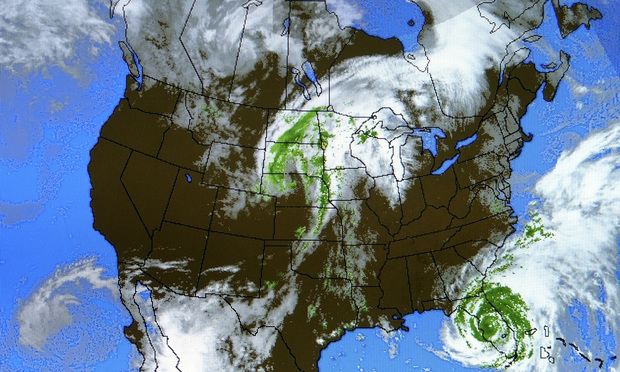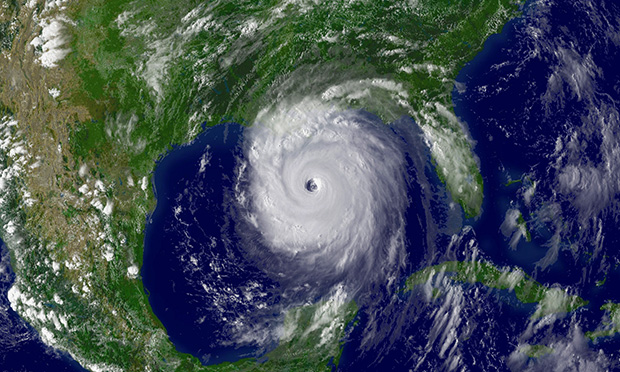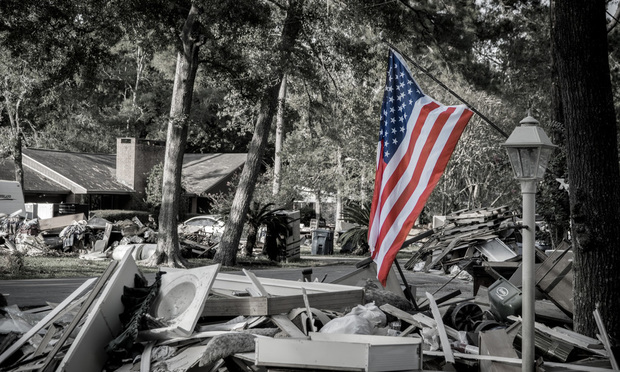 Businesses should designate one person — along with an appropriately trained alternate/backup — to take on the role of hurricane response coordinator. This person must communicate with leadership the minute they receive word of a hurricane and make sure all relevant stakeholders are informed of the threat in a timely manner. (Photo: Carolina K. Smith/Adobe Stock)
Businesses should designate one person — along with an appropriately trained alternate/backup — to take on the role of hurricane response coordinator. This person must communicate with leadership the minute they receive word of a hurricane and make sure all relevant stakeholders are informed of the threat in a timely manner. (Photo: Carolina K. Smith/Adobe Stock)
The 2020 hurricane season was particularly devastating, with seven of the 30 named storms claiming 86 lives and causing more than $40 billion in damages.
|For the sixth consecutive year, researchers at the National Oceanic and Atmospheric Administration (NOAA) and Colorado State University (CSU) predict 2021 will bring much of the same due to an "above average" hurricane season likely to impact thousands of businesses and millions of people.
|For businesses and employees alike, hurricanes can be catastrophic. Beyond the physical damage caused by severe rain and strong winds, hurricanes often impact supply chains and cause travel disruptions, even for organizations hundreds of thousands of miles away from the center of the storm. As a hurricane approaches, regardless of whether your business operates in a hurricane-prone area or not, everyone needs to consider and prepare for its impact.
|Below are some of the ways business leaders can better prepare their people and minimize loss ahead of this year's hurricane season.
|Stay up to date on the latest forecasts
Unlike other emergencies businesses may encounter, hurricanes are foreseeable events that come with plenty of advanced warnings thanks to sophisticated tracking technology. For example, forecasters at CSU have already issued guidance suggesting we'll see 17 named storms, upwards of eight hurricanes, and a high likelihood that at least one will make landfall in the United States.
|However, hurricanes still have the potential to change course — often over the course of a single day — or become more significant shortly before making landfall. This means access to up-to-date, accurate information is essential for anyone tasked with protecting employees or company assets. To stay up to date, many organizations leverage dedicated threat monitoring systems that offer up-to-the-minute intelligence about the trajectory of storms along with useful context such as which employees, locations or assets might be impacted.
|Align and empower your hurricane response team
Once you receive news a hurricane is approaching, you need to determine your company's response. Prior to the pandemic, that may have meant gathering key stakeholders in a conference room to discuss the best course of action for your organization. But today, with much of the workforce still remote, organizing an effective response is more difficult.
|While hopping on a video conference call offers a great alternative to an in-person meeting, you need to designate one person (with an appropriately trained alternate/backup) to take on the role of hurricane response coordinator. This person must communicate with leadership the minute they receive word of a hurricane and make sure all relevant stakeholders are informed of the threat in a timely manner. They will also be responsible for communicating response measures to employees once decisions are made. In other words, this person will be the glue behind your organization's hurricane response.
|With the rest of your key stakeholders, consider the various types of scenarios that may occur once a hurricane makes landfall. Responses might include office closures if you have employees working onsite at a business location, a mandatory evacuation, or efforts to help the broader community prepare.
|When Hurricane Harvey hit in 2017, The Gulf Coast Blood Center immediately found itself in crisis mode. It not only needed to ensure employee safety during the storm, but it also needed to continue blood delivery to hospitals throughout the Houston area. All executives hopped on a conference call to discuss necessary plans and procedures, which became the company's primary method of communication and helped them navigate the storm with confidence. The company also relied on two-way communication and read receipts to account for all employees and identify whether anyone needed additional assistance.
|Figure out who is at risk
Organizations have a duty of care — a moral and legal obligation to protect their people from unnecessary risk of harm. Fulfilling that duty is just as important as physically preparing for a hurricane. Hurricanes can last for a long time, conditions and forecasts can change rapidly, and plans may have to be updated and revised multiple times throughout a severe storm. To keep your people safe throughout the entirety of a hurricane, you need a reliable way to to stay in constant communication with them. Remember, the substance of your communication may also be different now that many, or all, of your employees are remote.
|Take the time to outline all the precautions they should take, including how to safely shelter in their home when it hits, what areas will be affected, and whether your community has a specific evacuation plan. Some employees may not even be residing in the same state as their home office anymore, so it's important to ensure your emergency communication system is updated with the correct employee contact data so you can get the right messages to the right people quickly.
|Communicate your plan
Once you've identified your response to the hurricane and determined which employees are at risk, it's time to hit send and communicate with your affected employees. In past years, communication may have been handled in person or via email, but neither of these options are sufficient anymore. Employees' inboxes may be flooded, or they may only have access to a mobile device.
|The solution is to send any important information over multiple channels, including SMS, email, voice, and mobile push notification. As with any crisis, the goal should be to overcommunicate and ensure the right people receive the right message through whatever channels are available to them.
|For Gehring Group, a consultancy headquartered in Palm Beach Gardens, Fla., multichannel message delivery eliminated the spread of misinformation and improved message delivery during hurricanes and other emergencies. According to John Muller, Gehring Group's Director of Talent, the company moved to a multichannel communication system after realizing most people aren't checking email consistently enough during an emergency. Now his team can activate their emergency response plan quickly and efficiently — and even from a mobile device.
|Getting ahead of the storm
Having the ability to quickly send out notifications to employees in seconds is foundational to an effective hurricane preparedness plan and takes your response from reactive to proactive.
|It may be tempting to push aside preparing for hurricane season in light of the ongoing demands of COVID-19, but if there's one thing the pandemic has revealed, it's that preparation is critical to keeping employees safe and maintaining business continuity. By identifying the challenges early on, you'll be able to communicate more easily and effectively with employees and avoid getting caught off-guard when the next major hurricane arrives.
|Peter Steinfeld ([email protected]) is vice president of Safety Solutions at emergency communication provider AlertMedia. This piece is published with permission from the author and may not be reproduced.
|Click here to read additional thought leadership on the topic of hurricane-season response and preparedness.
Want to continue reading?
Become a Free PropertyCasualty360 Digital Reader
Your access to unlimited PropertyCasualty360 content isn’t changing.
Once you are an ALM digital member, you’ll receive:
- All PropertyCasualty360.com news coverage, best practices, and in-depth analysis.
- Educational webcasts, resources from industry leaders, and informative newsletters.
- Other award-winning websites including BenefitsPRO.com and ThinkAdvisor.com.
Already have an account? Sign In







